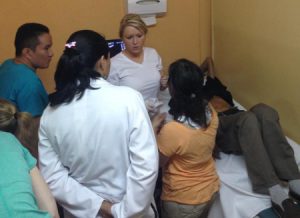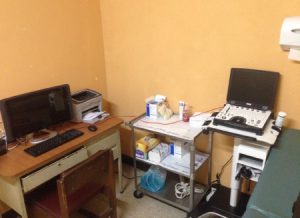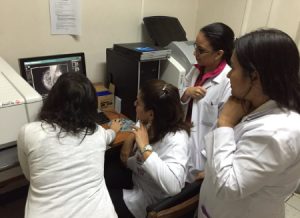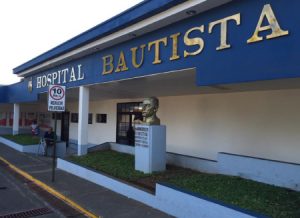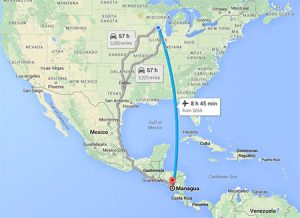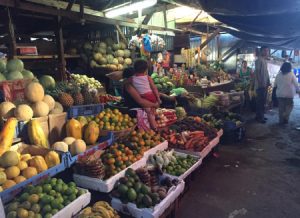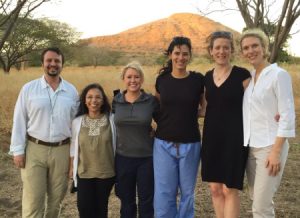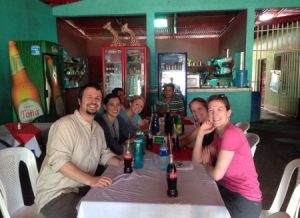According to the World Health Organization (WHO), approximately 4 billion people around the world live with illnesses and deaths that could have been treated or avoided, if radiology services had been available.
RAD-AID was started in 2008 to answer this need for more radiology and imaging technology in resource-limited regions and communities of the world. The nonprofit organization began as a few people at Johns Hopkins University, and has grown to include more than 2,700 contributors from 200 countries, 45,000 web visitors per year, 25 chapter organizations, and on-site programs in more than 10 countries.
The University of Wisconsin RAD-AID chapter launched in 2014 under the leadership of then UW Radiology Assistant Professor Gillian Battino, M.D., Director of RAD-AID Latin America. Following Dr. Battino’s departure to pursue a Masters of Public Health, Assistant Professor Bora Ozel, M.D., now leads the UW RAD-AID chapter. He is building on the work of the UW group which served as the first outreach team to Nicaragua in May 2014. The UW RAD-AID chapter collaborates with RAD-AID’s in-country partner, AMOS Health and Hope, located in the Nicaraguan capital of Managua.
Health needs in Nicaragua are a result of problems that plague many Latin American countries: poverty, a high prevalence of malaria and other parasitic diseases, and a disorganized healthcare system. While the upper class typically utilizes private healthcare, sometimes going abroad for specialized treatment, 90% of the population uses public facilities, according to the World Health Organization. These public hospitals are frequently understaffed and under-supplied, and are concentrated in large cities. This creates ‘healthcare deserts,’ rural areas where adequate care requires a multi-hour journey to a larger city. “One of the women who we preformed ultrasound on had traveled six hours by horseback, while eight months pregnant,” said Junior Chief Resident Erica Knavel, M.D. In addition, a mere 6.3% of the population is insured, resulting in prohibitive out-of-pocket expenses for many patients.
The 2015 RAD-AID team began their trip in Managua, performing obstetric ultrasounds. The 2015 team was comprised of Dr. Ozel, Assistant Professor Mai Elezaby, M.D., Assistant Professor Erica Riedesel, M.D., Junior Chief Resident Erica Knavel, M.D., Resident Jeannine Ruby, M.D., and Sonographer Christina Hendricks. After a day of scans, they split into two teams.
One team drove eight hours east to El Ayote, a small town with a population of just over 5,000. Upon arrival they got right to work, although their scanning wasn’t without incident. “So we have our laptop ultrasound, and we’re ready to go, when we notice the probe isn’t working. We had to do a little bit of troubleshooting, but we had a really great team that stayed calm, so we were able to figure it out and get the machine running again,” said Dr. Knavel. These ultrasounds were the first ever preformed in the El Ayote area, and comprised of a mix of obstetric scans and abdominal scans looking for gallstones or urinary tract problems.
The malfunctioning scanner wasn’t the only bump in the road for the El Ayote team. In order to clean the transvaginal ultrasound probe, the team selected a foam cleaner that would better withstand the rigors of travel than cleaners typically used in the U.S. “Unfortunately, the preferred cleaning solution was held up by the ministry of health upon entering the country, so we had to use a highly-toxic liquid cleaner instead,” said Knavel. “On the way to El Ayote, the roads were so rough that the top came off of the cleaner and spilled all over our bags, I got a little on my arm…you definitely have to improvise to make things work.”
Mishaps aside, the team thoroughly enjoyed their work in El Ayote, although it showed the stark contrast in health services between Nicaragua and the U.S. “They don’t have a lot of medical resources out where they are, and some of the biggest problems they have faced are high rates of maternal and infant mortality,” said Dr. Knavel.
While that part of the group was in rural Nicaragua, Drs. Ruby and Elezaby were forging relationships with local radiology residency programs. They visited Bertha Calderon, the country’s sole public women’s hospital, which exemplifies public healthcare in Nicaragua. “It is free care, but there are long waits of up to three months, and there is no CT and only two mammography machines [at Bertha Calderon],” said Dr. Ruby. “I think the lack of [equipment such as] CT represents a lack of resources in general.” Some of the residents had never even seen a case of early-stage breast cancer, but rather only mid to late-stage breast cancer, as routine mammography screening is uncommon in Nicaragua.
Next, the group visited Hospital Bautista, one of the largest private hospitals in Managua. There, they spent time giving lectures and showing cases to radiology residents and faculty. While Hospital Bautista suffers from some of the same problems as Bertha Calderon, the group was impressed by the local residents’ ability work with limited resources. “They use a lot of ultrasound, because it’s accessible and inexpensive. They don’t have ultrasound techs, they do all the ultrasounds themselves. So the residents are more proficient at ultrasounds than we were!” said Dr. Ruby.
The Nicaraguan residents were very welcoming, and demonstrated an eagerness to learn from their American counterparts. “They wanted advice, asking, ‘Look at this report, is this how you would say it?’ or, ‘What would you do with this case?’ They really valued our feedback, and were very interested in engaging with us,” said Ruby.
UW Radiology’s involvement with RAD-AID provides a unique opportunity for faculty and staff, both to give back and to experience healthcare in a new light. “It was quite an experience. I have never done anything like that before; it was really eye-opening,” said Dr. Knavel.
Read more about RAD-AID’s work at RAD-AID.org.
Visit RAD-AID Nicaragua at Facebook for updates about future trips.
